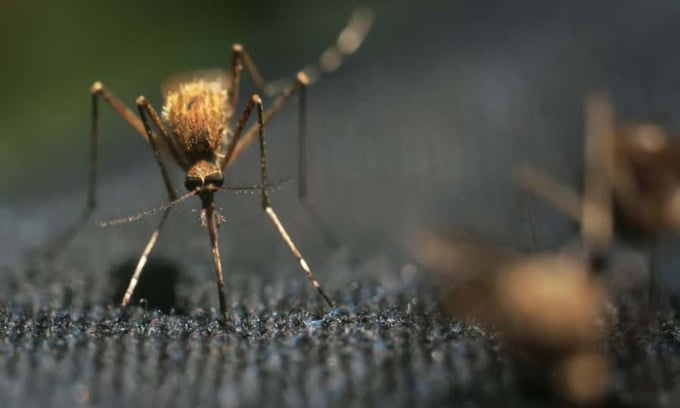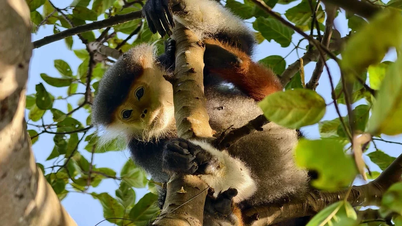The new knitted fabric is specially designed to prevent mosquito proboscises from penetrating the skin, while still being comfortable to wear.

A mosquito's proboscis can pierce through many types of fabric. Photo: Borkin Vadim
John Beckmann, a researcher at Auburn University in Alabama, began developing anti-mosquito clothing after the clothes he bought for a cruise failed to work, New Scientist reported on May 13. "I was eaten alive," he shared.
Any clothing thicker than the length of a mosquito's proboscis will help prevent bites, but such clothing is not suitable for warm climates where mosquitoes thrive.
In a new study published in the database bioRxiv , Beckmann and his colleagues tested the bite protection of several popular clothing brands. Volunteers wore the garments, then placed their arms in cages filled with mosquitoes and counted the number of bites. None of the woven fabrics tested offered any protection, but one knitted fabric did to a certain extent.
Knitted fabrics are made of loops of yarn linked together rather than interlocked yarns. Many garments are made from microknits, which are machine-made and can be programmed to weave different patterns.
The team found that a type of knitting called interlock (loops of yarn stacked on top of each other) can prevent bites. They found that increasing the thread width and decreasing the length of the weave further enhanced this ability. Increasing the ratio of spandex to cotton or polyester also helped. The team says their mosquito-repellent fabric can prevent bites from at least two species, the small Aedes aegypti mosquito and the much larger Psorophora howardii mosquito.
When the mosquito starts to insert its proboscis into the fabric, the loops close up and prevent the proboscis from penetrating the skin, Beckmann said. Some of the knitted fabrics the team created were stiffer than standard fabrics, but they found one that was just as comfortable. The technology is patented by Auburn University, and the team plans to license it to clothing companies.
“If I could buy a shirt that was just as comfortable and priced the same, and also kept the mosquitoes out, I would definitely prefer that shirt,” Beckmann says.
Beckmann doesn’t yet know the rate of bites through clothing versus on bare skin, but he hopes the new fabric will significantly reduce the spread of mosquito-borne diseases like dengue fever, Zika, and malaria. Beckmann also plans to test whether the anti-mosquito knitted fabric will help repel other insects like fire ants and flies.
Thu Thao (According to New Scientist )
Source link


![[Photo] Keep your warehouse safe in all situations](https://vphoto.vietnam.vn/thumb/1200x675/vietnam/resource/IMAGE/2025/10/1/3eb4eceafe68497989865e7faa4e4d0e)
![[Photo] Hanoi morning of October 1: Prolonged flooding, people wade to work](https://vphoto.vietnam.vn/thumb/1200x675/vietnam/resource/IMAGE/2025/10/1/189be28938e3493fa26b2938efa2059e)


![[Photo] President of the Cuban National Assembly visits President Ho Chi Minh's Mausoleum](https://vphoto.vietnam.vn/thumb/1200x675/vietnam/resource/IMAGE/2025/10/1/39f1142310fc4dae9e3de4fcc9ac2ed0)



























































































Comment (0)